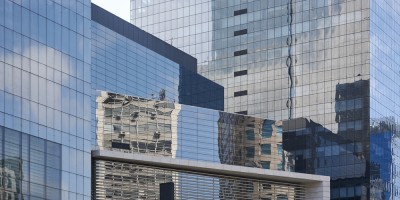-
Switzerland
Switzerland: company reorganization
13 February 2017
- Agency
A reduction in capital requires a resolution by the general meeting of shareholders amending the articles. Such an amendment cannot be passed unless a special audit report shows that all claims of creditors are fully covered in spite of the reduction in capital. The auditors’ report must be prepared by a qualified auditor. Prior to implementing the reduction, the board of directors is required to publish the decision three times in the Swiss Official Gazette of Commerce. Creditors are to be informed. An exception is made for reductions in the event of capital deficiency. Under no circumstance may the share capital be reduced below SFr. 100,000. In the case of a financial restructuring of the company, the par value of the old shares may however be reduced to less than SFr. 10 each. In spite of a reduction in the par value, a share may still carry the same voting rights as before reduction.
A company may be dissolved for any voluntary reason provided for by the articles or by decision of the general meeting of shareholders. An involuntary dissolution can be imposed upon the company by bankruptcy or a court decision. A court can dissolve a company, for example, in cases where serious violations of legal or statutory provisions have occurred. Furthermore, shareholders representing at least ten per cent of share capital may request dissolution by the court if they have good cause (for example, if minority rights have been violated).
Except in the case of a bankruptcy, the board must register the dissolution of the company with the Commercial Register. During the period of liquidation, the company remains a legal entity and retains its name with the addition in liquidation. Unless the company appoints special liquidators, the liquidation procedures are carried out by the board. The name of the liquidators is to be registered. At least one of the liquidators must be domiciled in Switzerland and have authority to represent the company.
The term liquidation means that the company’s normal business activities are discontinued and restricted to such operations as are necessary to settle all pending matters. The liquidators must prepare a balance sheet upon assuming their duties. If the balance sheet shows an excess of liabilities over assets, the liquidators must file an application for bankruptcy, unless arrangements can be made for an amicable settlement with the creditors.
In all other cases, the liquidators must attempt to wind up the business (termination of contracts, collection of receivables, payment of outstanding debts) with a view to reaching a final settlement with creditors and shareholders. In this connection, creditors reflected in the books of the company or known in any other way shall be informed of the dissolution of the company in writing and requested to file their claims; unknown creditors and creditors whose domiciles are not known are notified by publication in the Swiss Official Gazette of Commerce. In order to protect unknown or disputed creditors who have failed to lodge their claims, an appropriate amount of money must be deposited in escrow. A distribution of net assets is postponed until such liabilities have been settled.
After settlement of all liabilities, the remaining net assets of the liquidated company may be distributed among the shareholders in proportion to their holdings and in accordance with the rights attached to their shares. Upon termination of liquidation procedures, the liquidators apply for deregistration and designate a safe place where the books must be kept for a period of ten years. Deregistration is contingent upon express approval by the Federal and Cantonal Tax Administration, to ensure that all taxes on income, capital and distribution have been paid in full.
A resolution dealing with the merger of companies may only be passed at the general meeting of the shareholders, if at least two thirds of the shares are represented. Creditors of merging companies are given special protection.
The merger procedures can be summarized as follows:
- The board of directors of the acquiring company must issue a call for registration of claims by the creditors of the company to be dissolved.
- The net assets of the company to be dissolved must be administered separately by the acquiring company until creditors are satisfied or secured.
- The dissolution of the absorbed company must be registered in the Commercial Register as soon as creditors have been satisfied or secured.
- Subsequent to this registration, shares of the acquiring company may be delivered to the shareholders of the absorbed company, according to the contract.
The members of the board of the acquiring company are personally, jointly and severally liable to the creditors of the absorbed company. The net assets of the absorbed company may be used exclusively for the satisfaction of that company’s creditors.
A corporation can be converted into a limited liability company, provided that the capital of the limited liability company is not less than the corporation’s share capital, that shareholders are informed about the possibility of becoming participants in the newly created company, and that their participations amount to at least two thirds of the share capital of the transformed company. Any retiring shareholder is entitled to a proportionate share of the net assets valued at fair market price. With regard to the creditors of the transformed company, the same provisions apply as for mergers. A limited liability company may not be transformed into a corporation. It must be liquidated and a new corporation formed.






















